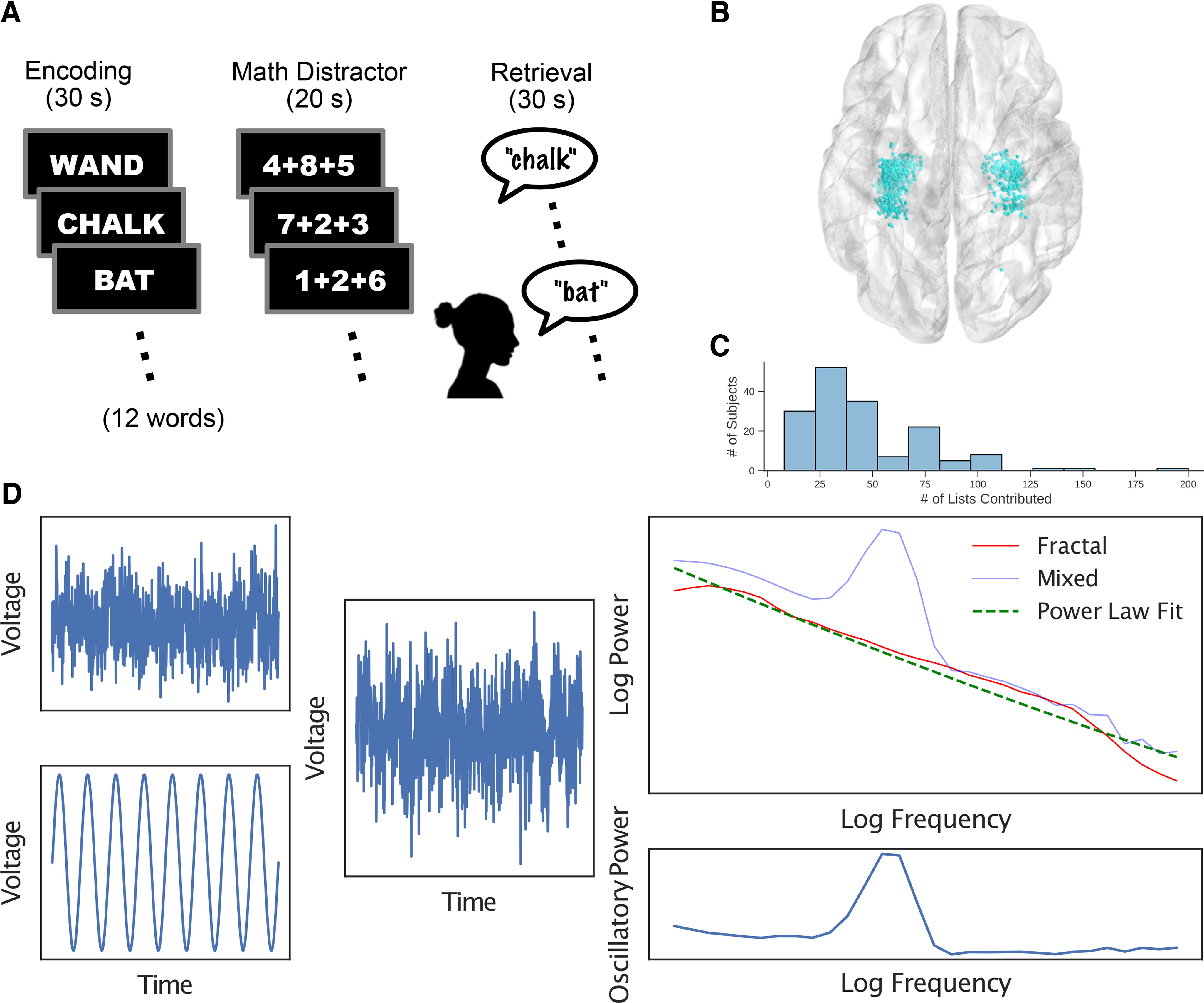Figure 1.

Materials and methods. A, Participants performed a free recall task in which they were presented with a list of words on a blank screen in sequence, completed a math distractor task, and were then prompted to recall as many of the presented words as possible during a 30 s free recall period. B, Data for this analysis were collected from electrodes located in the bilateral hippocampus across 162 participants. C, Distribution of the number of studied lists across participants. D, IRASA treats an EEG trace as a linear combination of an oscillatory component and a fractal pink noise component that is assumed to follow a power law distribution. IRASA capitalizes on a mathematical property of fractals called self-affinity, which causes them to behave differently under resampling from other signals, thereby allowing us to separate the components and obtain a purely oscillatory power spectrum.
